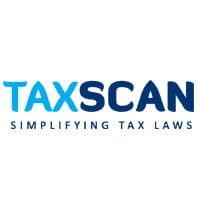No Service Tax Leviable on Services Rendered to Government or Local Authorities by Educational Institutions Falls Under ‘Governmental Authority’: Supreme Court [Read Judgement]
![No Service Tax Leviable on Services Rendered to Government or Local Authorities by Educational Institutions Falls Under ‘Governmental Authority’: Supreme Court [Read Judgement] No Service Tax Leviable on Services Rendered to Government or Local Authorities by Educational Institutions Falls Under ‘Governmental Authority’: Supreme Court [Read Judgement]](https://www.taxscan.in/wp-content/uploads/2023/10/No-service-Tax-Leviable-Services-Rendered-to-Government-or-Local-Authorities-Educational-institutions-Governmental-Authority-Supreme-Court-taxscan.jpg)
In a recent case, the Supreme Court of India held that the services rendered by the educational institutions like the Indian Institute of Technology, Patna (IT) and the National Institute of Technology, Rourkela (NIT) to Government or local authorities are eligible for service tax exemption which was covered under the definition of ‘Governmental Authority’.
Shapoorji Pallonji and Company Pvt. Ltd. & Ors, the respondent-assessee was a Project Management Consultant to oversee the construction of buildings/facilities/services for its academic complex.
The revenue department issued the show cause notice for non-payment of service tax by the assessee and raised demand on them. However, the High Court of Patna directed the department to refund the collected demand of service tax to the assessee.
Thus the department appealed against the order of Patna High Court for allowing the refund of service tax demand to the assessee.
The counsel for the assessee contended that in 2012, the Department of Revenue issued a Mega Service Tax Exemption Notification, in the exercise of powers under Section 93 of the Finance Act, 1994 specifying the services exempted from service tax, and this notification was further amended on January 30, 2014.
Also submitted that NIT and IIT Patna qualifies as a “governmental authority” under the Exemption Notification as amended by the Clarification Notification and all the services rendered by them to the government are not liable to service tax.
Bagchi, the counsel for the department contended that IIT Patna and NIT Rourkela were not eligible for the benefits outlined in the Exemption Notification due to its exclusion from the definition of “governmental authority”.
The Court observed that when the Clarification Notification introduced an amended version of clause 2(s), the whole canvas was open for the author to define “governmental authority” whichever way it wished however, “governmental authority” was re-defined with a purpose to make the clause workable in contra-distinction to the earlier definition and thus it cannot overstep and interpret “or” as “and” to allow the alternative outlined in a clause.
Also observed that when there was no ambiguity in the words, then no exposition contrary to the words was to be made and thus there arises only one plausible construction of clause 2(s) which was the one the Patna High Court adopted and which we are inclined to uphold.
The two-member bench comprising Ravindra Bhat and Dipankar Datta upheld the decision of the Patna High Court while dismissing the appeal filed by the revenue.
To Read the full text of the Order CLICK HERE
Support our journalism by subscribing to Taxscan premium. Follow us on Telegram for quick updates
COMMISSIONER, CUSTOMS CENTRAL EXCISE AND SERVICE TAX vs M/S SHAPOORJI PALLONJI AND COMPANY PVT. LTD. & ORS , 2023 TAXSCAN (SC) 255

